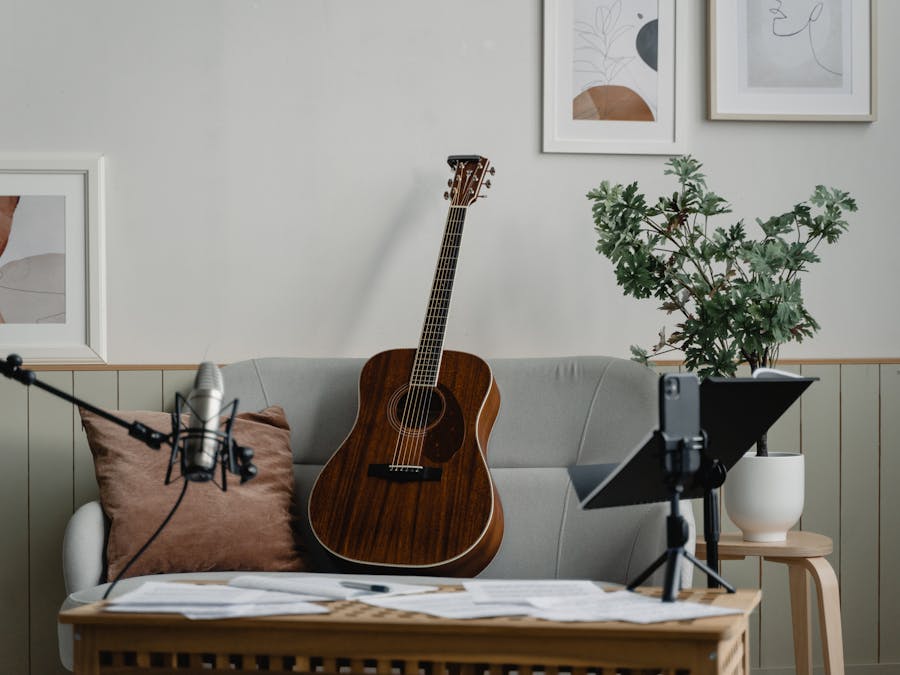 Piano Guidance
Piano Guidance
 Piano Guidance
Piano Guidance

 Photo: Vitalina
Photo: Vitalina
The term "12-bar" refers to the number of measures, or musical bars, used to express the theme of a typical blues song. Nearly all blues music is played to a 4/4 time signature, which means that there are four beats in every measure or bar and each quarter note is equal to one beat.

The ridges found on the F and J buttons on a computer keyboard are designed to help users locate the correct keys without looking down. The reason...
Read More »
The first chords to learn on guitar are Em, C, G, and D. Let's get started in “first position” or “open chords.” These chords are played close to...
Read More »The most common musical form of blues is the 12-bar blues. The term "12-bar" refers to the number of measures, or musical bars, used to express the theme of a typical blues song. Nearly all blues music is played to a 4/4 time signature, which means that there are four beats in every measure or bar and each quarter note is equal to one beat. A 12-bar blues is divided into three four-bar segments. A standard blues progression, or sequence of notes, typically features three chords based on the first (written as I), fourth (IV), and fifth (V) notes of an eight-note scale. The I chord dominates the first four bars; the IV chord typically appears in the second four bars (although in the example below, Elmore James introduces it in the first four bars); and the V chord is played in the third four bars. The lyrics of a 12-bar blues song often follow what's known as an AAB pattern. "A" refers to the first and second four-bar verse, and "B" is the third four-bar verse. In a 12-bar blues, the first and second lines are repeated, and the third line is a response to themoften with a twist. Below is an example of a 12-bar blues stanza from "Dust My Broom," as performed by Elmore James, and broken down by bars (measures), beats, chords, and lyrics: In each 12-bar stanza, the third four-bar segment (in the example above, the 9-12th bars), serves to resolve the previous four-bar segments. The resolution may signal the end of the song or set up another stanza. If the song continues, the transition to the next stanza is known as the turnaround. "Dust My Broom," for example, contains seven 12-bar stanzas, with a turnaround between each. Not all blues songs follow the 12-bar format, but by understanding this basic musical framework, the listener will gain a deeper understanding and appreciation for all blues music.

Or merely a ten-second refrain? Unfortunately, there are no fixed standards as to how much of a song you can use without infringing the song...
Read More »
As a guide, we can say $60 – $1000 will buy a keyboard for players of all skill levels. Similarly, around $400 – $1200 will buy a digital piano fit...
Read More »Queen – Really Easy Piano Another One Bites The Dust. Bohemian Rhapsody. Breakthru. Crazy Little Thing Called Love. Don't Stop Me Now. I Want It All. I Want To Break Free. Killer Queen. More items...

The combination of cheaper manufacturing costs with high-quality materials has made Yamaha one of the most competitive piano manufacturers in the...
Read More »
JCUKEN (ЙЦУКЕН, also known as YCUKEN, YTsUKEN and JTSUKEN) is the main Cyrillic keyboard layout for the Russian language in computers and typewriters.
Read More »
Real pianists are marked by brains that efficiently conserve energy by allocating resources more effectively than anyone else. Dr. Timo Krings...
Read More »
Playing piano proficiently takes many years of practice, and hours of lessons. It takes a lot to go from playing a few notes at a time, to playing...
Read More »